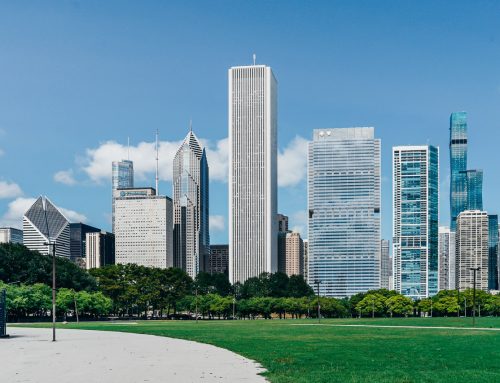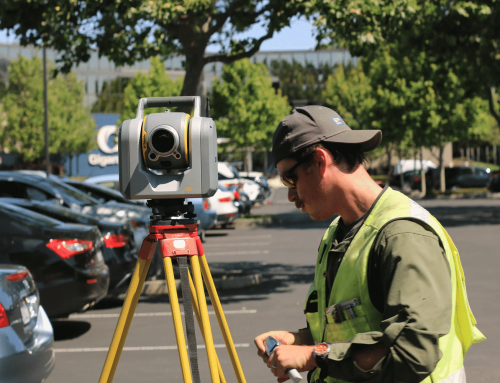There are many ways zoning laws can help reduce pollution, improve the public’s overall quality of life, and prevent a negative environmental impact. Zoning laws and regulations constantly change, and while that can make them hard to understand for someone who’s not in the industry, new zoning rules typically aim to help solve these problems.
Let’s look at six ways that zoning laws can (and have) help reduce pollution:
Six Ways That Zoning Laws Can Help Reduce Pollution
Do you need permit approval or compliance reports like NEPA land use or zoning compliance? Let Millman National Land Services help you today!
Prohibiting Specific Land Uses
One of the most direct ways that zoning laws can help reduce pollution is by instituting bans or prohibitions on specific land uses that are deemed harmful to the environment and public health. There are multiple ways that municipalities can prohibit undesirable land use by using their general powers to protect the people’s quality of life and health.
The municipality can modify and amend its existing zoning codes to identify the uses that it deems incompatible with a specific zone, or they can pass a stand-alone ban on the particular land use. There are multiple examples of municipalities adopting these types of prohibitions intended to protect public health and welfare or improve environmental conditions.
For example:
- In 2017, Seattle passed Resolution 31757, affirming the city’s commitment to meet the goals of the Paris Climate Agreement and calls on government entities to advance environmental impact goals.
- In 2018, Baltimore passed an ordinance banning the development or expansion of crude oil terminals in the city.
Related: Environmental Due Diligence
Municipal Activities Policies and Programs
Like state governments, Municipalities can establish broad programs and policies to reduce pollution and environmental impact, mainly focusing on land-use policies. Here are three examples of city and county governments that adopted broad-ranging policies to help fight pollution:
- In 2000, San Fransisco’s SF EJ Program was put into place to award local community projects and nonprofits with grants to address air quality, health inequities, and renewable and efficient energy.
- In 2010, Fulton County, GA started the Fulton County EJ Initiative that includes activities like community education and engagement, partnership development, and policy development. This initiative resulted in policies requiring the consideration of health impacts on low-income populations during the decision-making process for zoning decisions and land use planning.
- In 2017, New York City passed two laws relating to zoning laws and pollution effects:
- Local Law 60 requires the study of environmental impacts of zoning and land use.
- Local Law 64 established an “Interagency Working Group” to develop plans and provide agencies with guidance relating to environmental impacts.

Environmental Review Processes
Environmental review processes are a powerful way for local municipalities to regulate the development in their jurisdictions; many of them already have policies in place to review proposals for expansion and new development projects. For example:
- In 2004, Fulton County, GA passed an amendment to the 1996 Zoning Resolution, which requires Environmental Impact Reports. Under this zoning resolution, use permit and rezoning permissions are required to conduct an Environmental Study Analysis.
- In 2008, San Fransisco passed Ord No. 282-08, requiring power plants to obtain conditional use authorization from the zoning or planning board.
- In 2009, Cincinnati passed an ordinance requiring any projects to obtain an environmental justice permit from the Office of Environmental Quality.
- In 2015 Camden, NJ started requiring all developments to submit an Environmental Impact and Benefits Assessment to be reviewed by the planning and zoning board.
- In 2016, Newark NJ passed an ordinance that requires industrial and commercial developments to submit an environmental checklist with their application.
Proactive Planning
Proactive planning is how cities and states can envision future development projects and work towards that vision. Some examples of municipalities putting proactive planning policies into place are:
- In 2013, Commerce, CA established the Green Zones Policy, which adopts the three pillars of reduction, revitalization, and reinvesting. This municipal code limits or prohibits specific industrial uses in proximity to sensitive and residential areas.
- In 2015, LA County started the Green Zones Program seeking to enhance public health. This program includes new land-use policies, community engagement, and prevention and mitigation efforts.
- In 2017, Minneapolis designated green zones to develop goals and strategies to improve public health and economic development.
Related: The Purpose of Zoning
Targeted Land Use Measures
One way that zoning policies can have a positive effect on pollution is through targeted mitigation efforts, including implementing buffer zones, phasing out noxious land uses and mitigating hazards through code enforcement. Here are examples of cities targeting existing land uses:
- In 2001, Huntington, CA revised its zoning code to authorize imposing restrictions in building and operating permits based on their environmental impacts and proximity to residential areas. Their focus was to reduce diesel emissions after determining they posed a health risk to the citizens.
- In 2006, National City, CA put into place the Amortization Ordinance, which terminates non-conforming use after a specified period to allow businesses to recover their investments.
- In 2009, Washington D.C. passed an ordinance to ensure that every citizen received equal protection with environmental laws and provided meaningful opportunities to participate in decision-making. They enforce pollution laws like vehicle idling.
- In 2016, Minneapolis amended its Code of Ordinances to include pollution control, requiring all equipment that can impact the environment to get registered with the city.
Enhanced Public Health Codes
Cities can pass public health codes to enforce different types of pollution, like noise, light, odor, and dust. There are many examples of this throughout the country, but here are a few that show the impact on pollution that enhanced public health codes can make:
- In 2014, San Fransisco passed Health Code Article 38, which requires residential construction projects in areas with poor air quality to include enhanced ventilation to protect the public’s health.
- In 2014, Chicago put into place new air pollution regulations to minimize the emissions from everything related to the processing of bulk solid materials.
- In 2017, Detroit passed an ordinance requiring all bulk material facilities to take necessary dust control measures to prevent additional air pollution.
- In 2018, Erie, Colorado passed an odor ordinance making it unlawful for any property owner or occupant to permit odor emissions that can get detected by someone with a reasonable sense of smell.
- In 2018, Richmond, CA passed a regulation requiring that all storage and handling of coal that moves through the city’s waterfront must be enclosed.
Are you planning a new development or expansion? Let Millman National Land Services help with National Environmental Policy Act (NEPA) compliance reports and checklists!
Related: All About Zoning Codes








